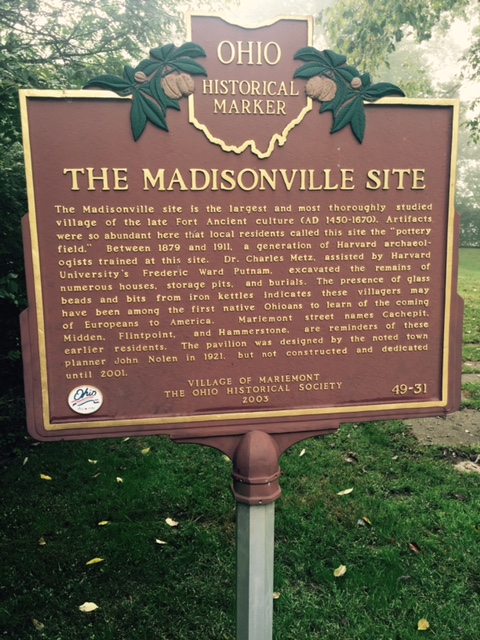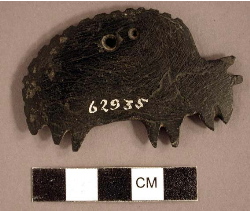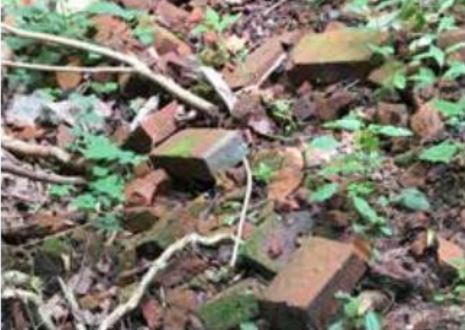
Both of my history road trips last weekend led me back to my own backyard and again to buffalo and bourbon. I learned about buffalo trails and bourbon invention in Stamping Ground, Kentucky, in search of some family roots. And, I learned the first cemetery in Cincinnati at the Columbia settlement near Lunken Airport is built on a Native American mound. No wonder the local Natives were peeved at the early Cincinnati settlers. The Buffalo Trail through Stamping Ground, what the Shawnees called Alanant-o-Wamiaowee, is actually a circular trail who’s eastern edge extends from Stomping Ground through Big Bone Lick in Boone County and crosses the Ohio at the confluence of the Little Miami.
That confluence just happens to be at an ancient Native American settlement known as the Madisonville site. At over 600 years old, this site is one of the most important sites in the U.S. for early Native American archaeology, and is probably one of the least known locally for its importance. The sad story is that the majority of its artifacts are not local. Although there are a few at the Museum Center, the Cincinnati Art Museum, and the Mariemont Preservation Society, the majority were pulled out in the 1880s and now in storage at Harvard University’s Peabody Museum. The interesting thing is that this virtual Luxor of the U.S is less than 2 miles from my own house as the crow flies. It’s now part of a parking lot for the Mariemont swim club. And, what local archeaologists say is the country’s largest Native American serpent mound, snakes from the swim club along Miami Bluff Drive.

The site was discovered and it’s study was led by local German American physician Dr. Charles Metz, who lived in Plainville, what the area of Mariemont was called before it became Mary Emory’s model community. He was also a member of the German gymnastic club, the Cincinnati Turnverein, when he lived in Over-the-Rhine. Metz used funding from Harvard to finance the digs, which is why they have the majority of the artifacts. What’s interesting about the site is that it is the only known ancient Native American site that shows the importance of buffalo to the diet of its inhabitants. Many buffalo effigies and pendants were found at the site. Dr. Metz discovered and wrote about the buffalo trace from the site to connection with the Alanant-o-Warmiowee trail. Buffalo bones were found in the refuse pits and as tools the inhabitants used. The early inhabitants of the Madisonville site tracked buffalo along this ancient trail, and maybe even as far as Stamping Ground.

A buffalo effigy unearthed from the Madisonville site in Mariemont.
The site was on the farm of Joseph Ferris, whose daughter Phebe Ferris, allowed the digs through her trusted friend Dr. Metz, and later willed the site to Harvard University. Joseph’s 1814-ish brick house is still standing on Wooster Pike in Fairfax, now the home of Old World Restoration, and his brother’s house – get his name – Eliphalet Ferris – is the oldest brick structure in Hamilton County — built in 1803 on Plainville Road in Mariemont across from the tennis courts. All the Ferris family are buried in the ancient burial ground next to the Mariemont Community Church, which was at one time part of their large 480 acre farm.
The houses of Joseph Ferris (left) and Eliphalet Ferris (right) You can see the whiskey distiller has the bigger of the two!
Just like in Stomping Ground, the ancient buffalo trace stop is also the site of Ohio’s earliest corn whiskey production. Joseph Ferris’ farm was known as “Whiskey Run” because in a little hollow behind his house he distilled our state’s earliest corn mash whiskey. Just like Elijah Craig, he shipped the final product downriver to New Orleans, but not in charred white oak barrels, but rather in salt glazed pottery that he made on his farm in a great kiln that has been recently rediscovered on a trail behind the Carillon Tower at Dogwood Park in Mariemont. There are probably Ferris whiskey crocks hanging out at antique shops in New Orleans to be found. So even though Joseph Ferris’ whiskey was corn mash, we really can’t call it bourbon, because it wasn’t aged in charred white oak barrels.

Salt glazed homemade bricks at the ruins of the Ferris Whiskey Run kiln in Mariemont.
But needless to say, this connection between buffalo, bourbon, and Native Americans seems to be running strong in my Fall activities.


where was the kiln found exactly? would love to check it out
LikeLike